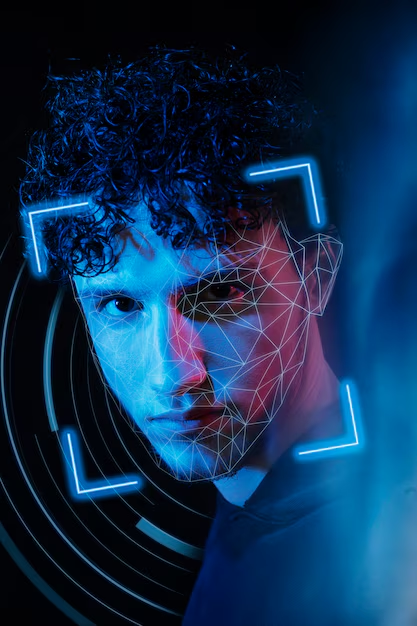In recent years, the field of artificial intelligence has made significant advancements in various industries, with one of the most intriguing applications being AI face swap technology. This innovative technology has revolutionized the way we interact with visual media, allowing for seamless and realistic face swapping in images and videos. In this article, we will delve into the fascinating world of AI face swap, exploring its origins, capabilities, ethical considerations, and future implications.
Origins of AI Face Swap Technology
The concept of face swapping is not entirely new, as it has been a popular feature in photo editing software for many years. However, traditional face swap techniques often require manual editing and lack the realism and accuracy that AI-powered solutions can achieve. The emergence of deep learning algorithms and neural networks has paved the way for more advanced and automated face swap technology.
One of the earliest examples of AI face swap technology gaining widespread attention was the development of apps like FaceApp and Snapchat filters, which allowed users to apply various face-swapping effects in real-time. These apps utilized convolutional neural networks (CNNs) to detect and manipulate facial features with remarkable precision, resulting in seamless and entertaining face swaps.
How AI Face Swap Works
AI face swap technology relies on sophisticated algorithms that analyze and map facial features in an image or video. By creating a detailed facial map of the target face, the AI model can seamlessly replace it with another face while preserving key characteristics such as expressions, skin tone, and lighting conditions. This process involves several key steps:
- Facial Detection: The AI algorithm identifies and locates key facial landmarks, such as eyes, nose, and mouth, in both the source and target images.
- Feature Extraction: The algorithm extracts detailed features from the source face, including texture, shape, and color information.
- Face Alignment: The algorithm aligns the facial features of the source and target faces to ensure a precise match during the swapping process.
- Blending and Rendering: The AI model blends the source face seamlessly onto the target face, taking into account lighting conditions, shadows, and facial expressions.
Applications of AI Face Swap Technology
AI face swap technology has a wide range of applications across various industries, including entertainment, social media, marketing, and digital art. Some of the key applications include:
- Digital Entertainment: AI face swap technology is commonly used in the film and gaming industry to create special effects, alter actors’ appearances, and enhance visual storytelling.
- Social Media: Platforms like Instagram and TikTok offer face swap filters that allow users to transform their appearance in real-time, adding a fun and interactive element to social media interactions.
- Marketing and Advertising: Brands leverage AI face swap technology to create engaging and personalized campaigns that resonate with consumers, enhancing brand awareness and engagement.
- Digital Art: Artists and designers use AI face swap tools to create surreal and imaginative artworks, pushing the boundaries of creativity and expression in the digital realm.
Ethical Considerations and Privacy Concerns
While AI face swap technology offers exciting possibilities, it also raises important ethical considerations and privacy concerns. The ability to manipulate and alter faces in images and videos has led to issues such as:
- Identity Theft: Malicious actors can misuse AI face swap technology to create realistic forgeries and impersonate individuals, leading to potential identity theft and fraud.
- Misinformation: Fake videos generated using AI face swap technology can spread misinformation and deceive viewers, undermining trust in visual media and authentic content.
- Privacy Violations: The use of AI face swap tools without consent can infringe on individuals’ privacy rights and expose them to potential harm or exploitation.
To address these challenges, policymakers, tech companies, and users must work together to establish ethical guidelines, regulatory frameworks, and awareness campaigns that promote responsible use of AI face swap technology and protect individuals’ rights.
Future Implications and Emerging Trends
As AI face swap technology continues to evolve, we can expect to see several emerging trends and future implications in the field:
- Enhanced Realism: Advancements in AI algorithms and deep learning models will enable even more realistic and seamless face swaps, blurring the line between reality and digital manipulation.
- Augmented Reality: AI face swap technology will play a crucial role in the development of augmented reality (AR) applications, offering immersive and interactive experiences for users in various industries.
- Deepfake Detection: Researchers are actively working on developing tools and techniques to detect deepfake videos created using AI face swap technology, helping to combat misinformation and protect against malicious use.
- Personalized Content: Brands and content creators will leverage AI face swap technology to deliver personalized and interactive experiences to audiences, enhancing engagement and driving innovation in digital marketing.
In conclusion, AI face swap technology represents a groundbreaking innovation with transformative potential in visual effects, entertainment, and digital media. By understanding its origins, capabilities, ethical considerations, and future implications, we can navigate the evolving landscape of AI technology responsibly and harness its power for positive impact in society.





